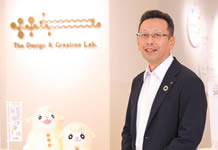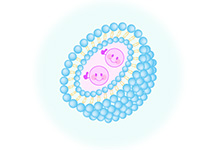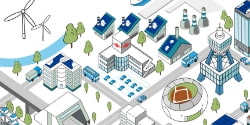Environment
ISO 14001 environmental management system
We have registered to ISO 14001, a global environmental management system, the Takasago Plant and the Kakogawa-Higashi Plant. We are engaged in continuous efforts to improve as we evaluate its impact on our business environment.
ISO 14001 registration status
Environmental policy
The ISO 14001 environmental policy is used as a company-wide policy to reduce environmental impact, protect resources, maintain and improve communication with customers and local communities, and strive to contribute to society while maintaining harmony with the environment.
Nippon Fine Chemical's ISO 14001 environmental policy
Nippon Fine Chemical's Kakogawa-Higashi Plant and Takasago Plant produce raw materials for cosmetics, for pharmaceuticals, and functional ingredients, etc. To continue pursuing production operations, policies concerning the environment have been established as follows, and we are working towards continuous improvement.
- Our production is designed to understand and comply with environmentally-related laws and regulations, and ensure there are no serious effects on the environment in or outside our company.
- We are reducing the usage of chemical substances that impact the environment and using raw materials that consider sustainability to provide environmentally-friendly products.
- Specific targets, goals, and periods are set, energy-saving activities are done in a planned fashion, and we save resources and reduce the amount of waste generated.
- We work to suppress or mitigate the dispersion of bad smells (waste water, raw materials, or other bad smells arising from production) to co-exist with the community.
April 1, 2022
Pollutant Release and Transfer Register [PRTR]
Pollutant Release and Transfer Register [PRTR] is based on the PRTR Act [Act on Confirmation, etc. of Release Amounts of Specific Chemical Substances in the Environment and Promotion of Improvements to the Management Thereof]. It is a system that tracks, aggregates, and publishes data on the source and amount of various chemical substances that have been discharged into the environment, and whether they have been carried outside of the workplace within waste material.
We quickly established a management and calculation system for these chemical substances, and in April 2002 we implemented performance reports based on the PRTR Act. We are also working to reduce emissions of these chemical substances.
Energy conservation
In order to reduce the environmental impact through energy conservation, we have been working with success on the following efforts.
City gasification of fuel through boiler replacement
- The main once-through boiler at the Takasago Plant previously used kerosene for fuel, but it was replaced with a high-efficiency boiler that uses city gas for fuel, and started operation in 2014.
As a result, crude oil volume was reduced by approximately 40kL/year, and carbon dioxide emissions were reduced by approximately 600t.
- The main water boiler at the Kakogawa-Higashi Plant previously used heavy oil for fuel, but it has been replaced with a boiler that uses city gas for fuel, and started operation in 2016.
As a result, crude oil volume was reduced by approximately 120kL/year, and carbon dioxide emissions were reduced by approximately 2,000t.
Waste reduction and recycling
With the aim of creating a recycling-oriented society that values limited resources, we are engaged in the following efforts directed at 3R [Reduce, Reuse, Recycle].
- Improved recovery, reuse, and recycling of ingredients and solvents
- Promotion of waste recycling
- Promotion of waste paper collection and recycling





























